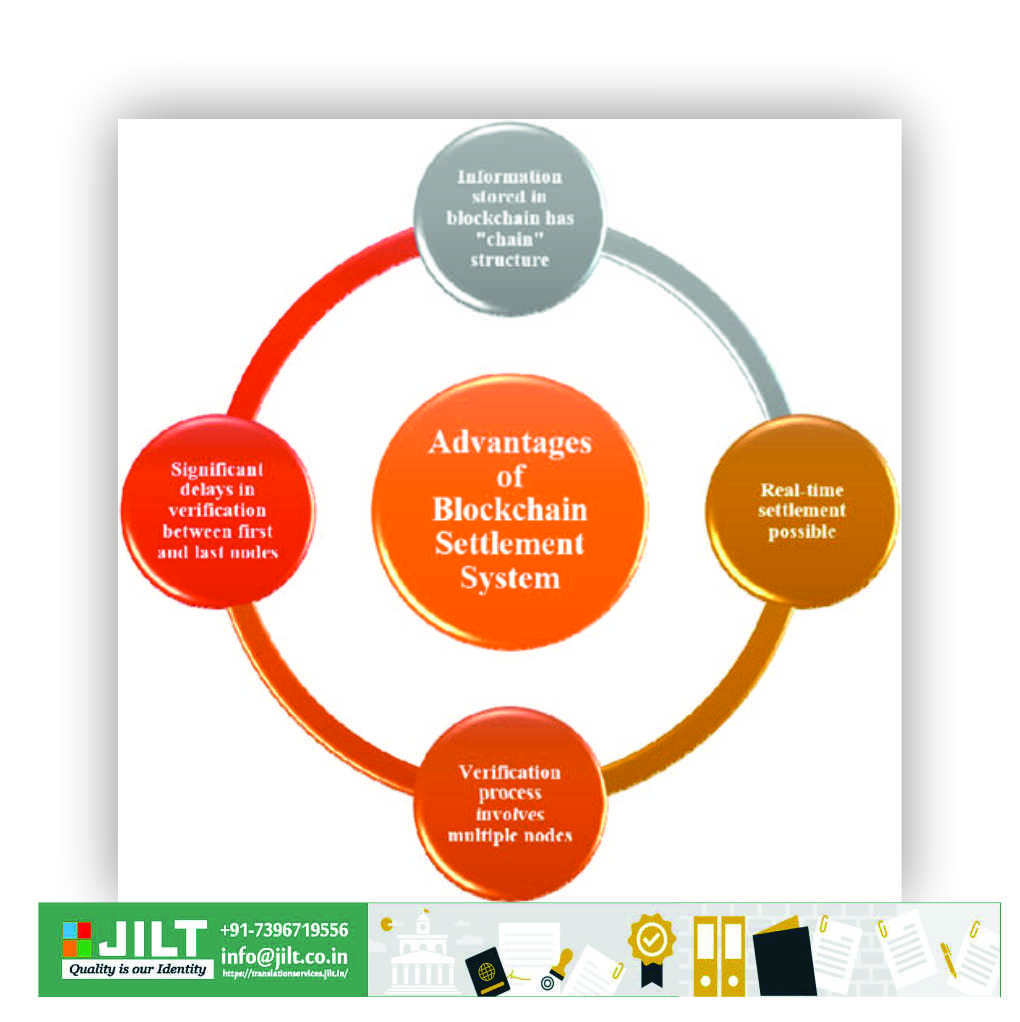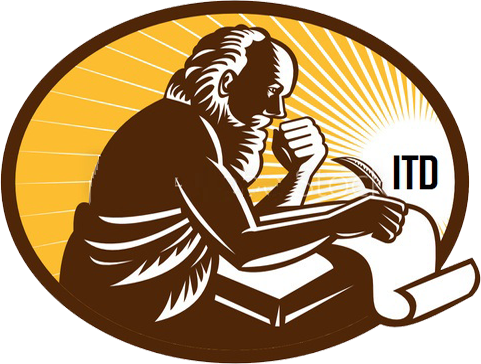
Blockchain and the Translation Industry: A Positive Perspective
by Dr. Abu Mazhar Khalid Siddique - April 29, 2024
Technology behind blockchain.
The technology known as blockchain is a decentralized digital ledger system that records transactions across a network of computers in a way that is secure, transparent, and unchangeable. The term "blockchain" comes from the fact that it is made up of data blocks, each of which contains a cryptographic hash of the block that came before it. This forms a chain of blocks, which is why it is called "blockchain." It is because of this structure that the data that is saved within the blockchain is guaranteed to be protected and secure.
This decentralized nature of blockchain technology is one of the most important aspects of this technology. Blockchain is a distributed network that runs in contrast to traditional centralized systems, which store data in a single area that is managed by a central authority. Consequently, this indicates that copies of the blockchain are kept on a number of computers, which are referred to as nodes, located all across the network. Because each node has a copy of the complete blockchain and any changes to the blockchain must be approved by consensus among the nodes, it is exceedingly difficult for a single entity to manipulate the data contained inside the blockchain.
The transparency of the blockchain technology is yet another key component of this technology. As a result of the fact that each and every transaction is recorded on the blockchain and is accessible to all of the members in the network, there is a high level of accountability and transparency. Having this level of openness helps to avoid fraudulent activity and ensures that the data that is kept on the blockchain is accurate.
Furthermore, blockchain technology provides a better level of security than other technologies. Hashing and digital signatures are two examples of cryptographic techniques that can be used to ensure that once data is stored on a blockchain, it cannot be changed or tampered with in any way. Blockchain technology is a solution that is excellent for applications where data security and integrity are of the utmost importance. Some examples of such applications include identity verification, supply chain management, and financial transactions.
How does blockchain impact translation services?
Blockchain technology has the potential to significantly impact translation services by enhancing security, transparency, and efficiency. Through blockchain-based platforms, translators can securely store and share their work, ensuring protection against unauthorized access or tampering. Smart contracts can automate payment processes, providing fair compensation to translators while reducing administrative overhead. Additionally, blockchain enables transparent tracking of translation revisions and versions, improving accountability and quality assurance. Overall, blockchain technology empowers translators with greater control over their work and fosters trust and collaboration within the translation ecosystem.
- Which individuals are responsible for translating blockchain and cryptocurrency? When I was reading about the ways in which blockchain technology is connected to the translation and localization sector, I came across a translation company tagline that has the phrase "We translate for your token." There is little doubt that blockchain represents yet another area of specialization, joining the ranks of areas such as the legal, medical, and financial sectors, among others. Blockchain translation, localization, and copywriting services covering initial coin offerings (ICOs) and cryptocurrencies are being offered by an increasing number of businesses. Documentation for initial coin offerings (ICOs) and pre-ICOs, white papers, smart contracts, websites and content connected to cryptocurrencies, trading platforms, financial reports, and other related materials are included.
Related articles appear to place Chinese, Korean, and Japanese among the most popular languages in this developing region. This is a promising area for language learning. The reason for this is that East Asia is at the forefront of the "crypto movement," and other reasons include the fact that content connected to blockchain technology is typically difficult to comprehend if one does not have a strong command of the English language. Following closely behind is the Spanish, Russian, and German languages, which appear to be the source of the second-highest demand.
- Marketplaces that are enabled by blockchain technology and are supported by initial coin offerings (ICOs) have also been established for the translation and localization sector, following the trend that has been seen. By providing venues in which participants can sell their services (assets) to purchasers directly utilizing payment tokens that are running on blockchain networks, these markets offer a variety of opportunities. It is possible for a translator, revisor, editor, agency, or any other individual who is involved in the pipeline of a project to add metadata to the blockchain. This metadata may include the translator's identity, the type of material, the language pair, the identifier of the customer, the date and time, and other information. After that, the customer's public key is used to encrypt these data, ensuring that only the customer may access it. A quality problem can be efficiently traced back to its source if it is discovered. Clients are able to gain access to the particular block in which the information has been stored and view the events that have transpired. On the basis of this information, they make a decision regarding the translators and reviewers that they would like to employ for other projects in the future.
Main goals and offerings of blockchain translation
- Blockchain technology offers a groundbreaking solution for protecting intellectual property by enabling the assignment of title rights directly to creators and permanently recording their work on an immutable ledger. Through blockchain-based platforms, creators can securely register their intellectual property, establishing undeniable proof of ownership. This transparent and decentralized approach ensures that creators retain full control over their creations while safeguarding against unauthorized use or infringement. By leveraging blockchain, creators can establish a verifiable record of their intellectual property rights, facilitating fair compensation and fostering innovation in various industries.
- Blockchain technology enables the tracing of linguistic work back to its original creator and ensures fair compensation for future use of their content. By recording each translation or linguistic contribution on a transparent and immutable ledger, blockchain provides a verifiable chain of ownership. Smart contracts embedded within blockchain platforms can automate royalty payments, ensuring that creators receive fair compensation for any subsequent use of their work. This innovative approach not only enhances transparency and accountability but also empowers linguists by granting them greater control over their intellectual property rights and facilitating a more equitable distribution of rewards within the translation industry.
- Blockchain technology facilitates the sharing of linguistic assets, including translation memories and training data for translation engines, on-demand and through a pay-per-use model. Through blockchain-based platforms, linguists can securely access and utilize these assets without the need for intermediaries. Smart contracts enable automated payment processing, ensuring fair compensation for asset owners based on usage. This decentralized and transparent approach not only streamlines asset sharing but also incentivizes collaboration and innovation within the translation industry, fostering a more dynamic and efficient ecosystem for linguistic resource utilization.
- Blockchain technology facilitates the tracking of translation quality and enhances reliability by enabling transparent feedback mechanisms. Through blockchain-based platforms, buyers can access a comprehensive record of past translations, including feedback from previous clients and performance metrics. This allows buyers to make informed decisions when selecting linguists for their projects, based on their demonstrated track record of quality and reliability.
Moreover, smart contracts can be utilized to automate quality assurance processes, such as verifying adherence to style guides and language standards. By leveraging blockchain technology, the translation industry can establish a standardized framework for assessing and improving translation quality, ultimately enhancing client satisfaction and trust in the linguistic services provided.
- Blockchain technology accelerates the payment process within the translation industry by streamlining micropayments through cryptocurrency. Utilizing blockchain-based platforms, transactions can be executed swiftly and securely, eliminating the need for intermediaries and reducing processing times. Smart contracts enable automated payment processing, ensuring that linguists receive prompt compensation for their work. By leveraging cryptocurrency, micropayments can be facilitated seamlessly, regardless of geographical boundaries or traditional banking constraints. This innovative approach not only enhances efficiency but also promotes financial inclusivity within the translation ecosystem, empowering linguists with faster access to their earnings.
Simply put, it implies eliminating the intermediary that exists between service providers and customers, enabling the two parties to engage in transactions in a secure and direct manner. To illustrate this point, consider financial operations like as money transfers, in which all intermediary procedures, such as checking for funds, applying service charges, and converting currencies, are performed automatically. The act of sending money to another person without going through a bank or credit card firm that acts as an intermediary. Imagine having the ability to monitor the location of the manufacturing process of a product by means of an item history that validates the location, time, method, and source of the product's production. The ability to track the precise location of your contributions and the manner in which those monies are utilized. When voting is assisted by technology that can eradicate election fraud, having access to medical data and patient records that are completely protected and transparent is a significant advantage.
Our organization employs native-speaking translators who can provide certified translation services in any language. We provide translation services in English (Urdu), Arabic (Spanish), German (French), Persian (Iranian), French (Italian), Japanese (Korean), Russian, and any other Indian or local language. Expert proofreaders at our company will inspect the translation. We also provide a courier service to deliver completed documents to our clients.
- Also Read :- WHAT IS A CERTIFIED TRANSLATION OF DOCUMENTS?
- Also Read :- Legal Documents Translation
- Also Read :- The Importance of Translators and Interpreters in Today\'s Globalized World
- Also Read :- Keywords Research Is backbone for Multilingual SEO
- Also Read :- HOW DID THE ENGLISH LANGUAGE BEGIN, AND HOW DID IT BECOME SO WIDESPREAD?
- Also Read :- Pay Slips Document Translation Services
- Also Read :- Transfer Translation Services
- Also Read :- Trust Receipt Translation Services
- Also Read :- Translation and localization services for manufacturing
- Also Read :- The Director of the company Dr. AMK Siddiqui received the gold medal in translation studies
Search
Categories
Archives by Month
Popular Blog
QUICK TRANSLATION QUOTE
Need help with a translation?
Get in touch with us
Whether you have a specific project you want to discuss, need a translation quote or simply want to discuss your requirements, do not hesitate to get in touch with us.











Social Networks